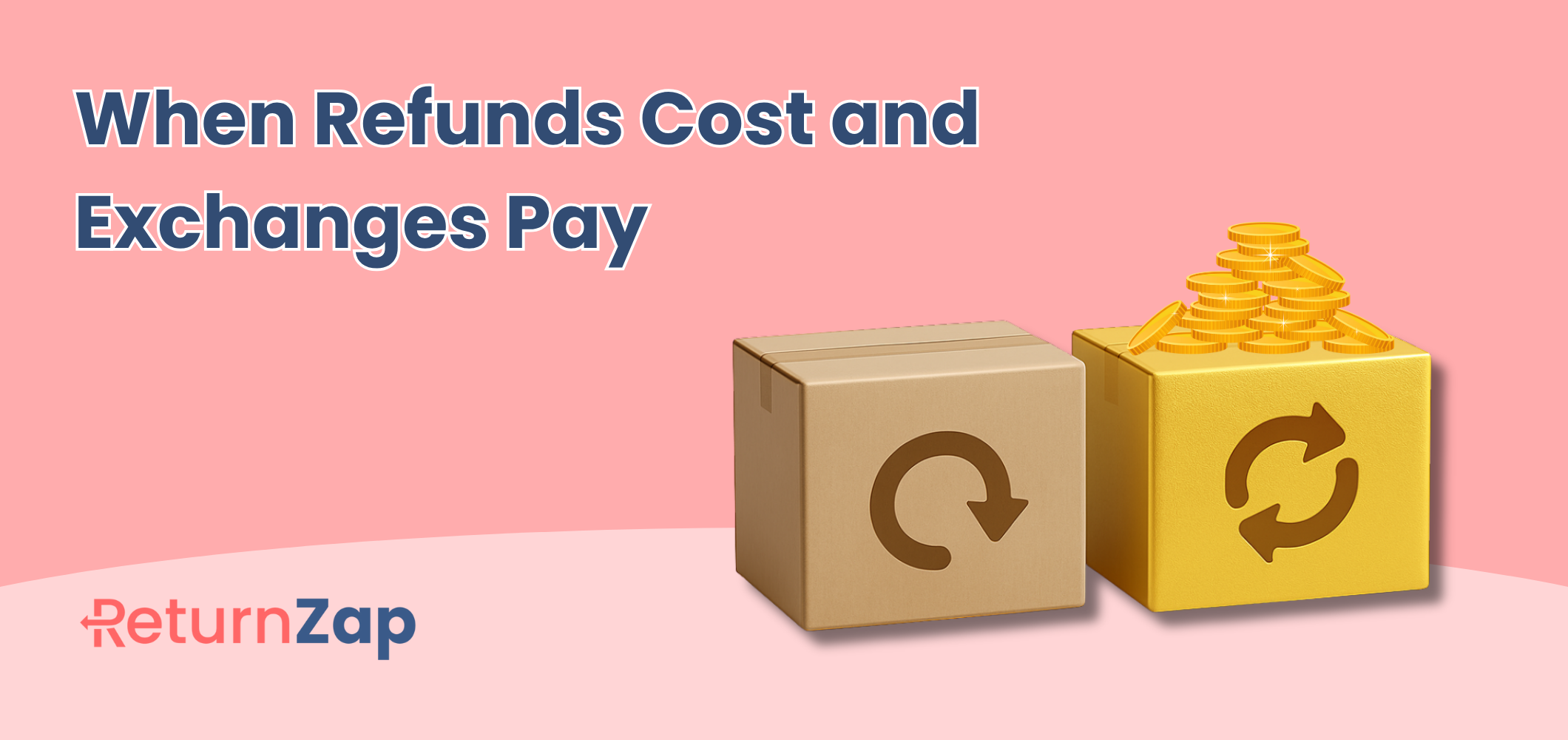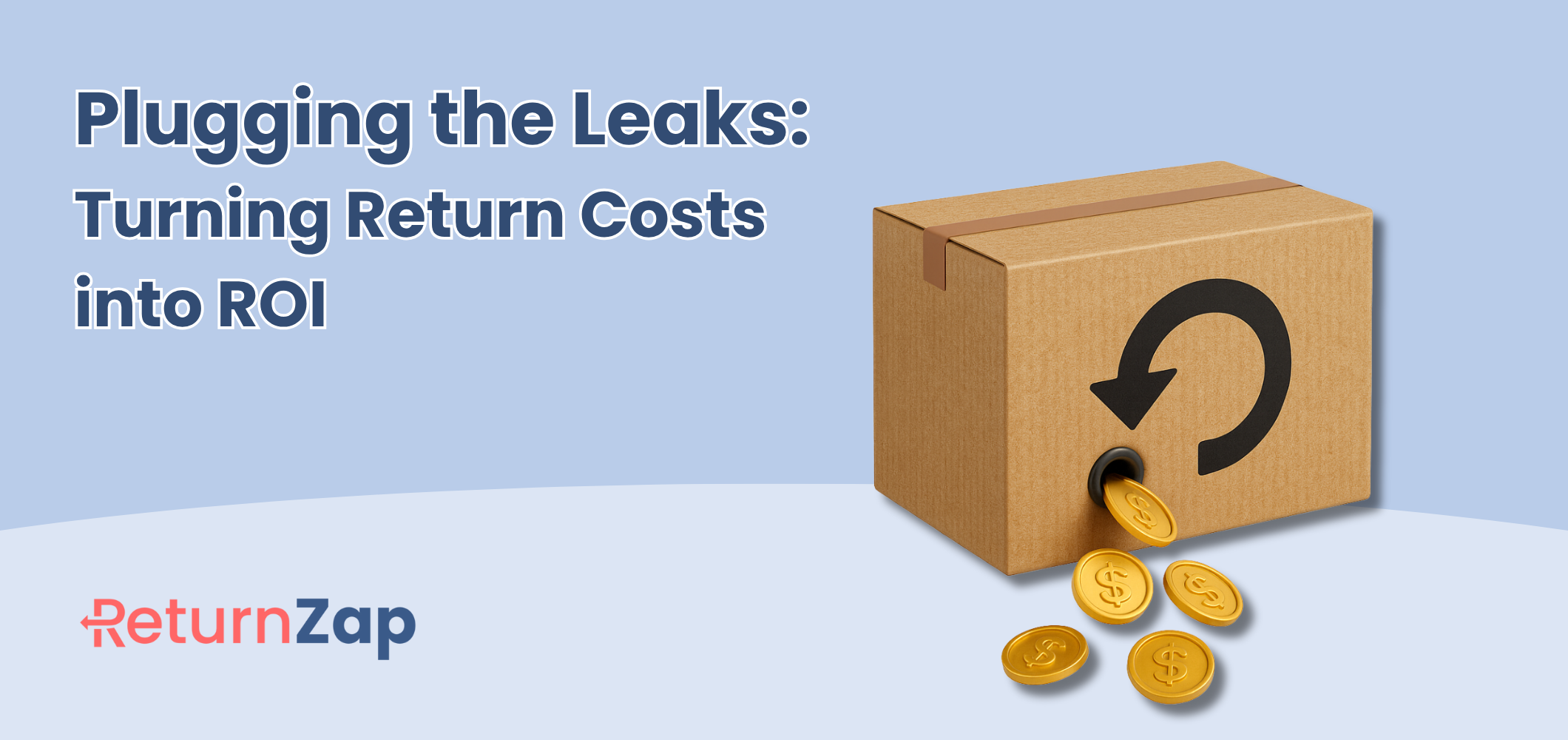Shopify Returns Policy Template

Looking for a Shopify returns policy template you can use on your shop? Look no further - ReturnZap has compiled best practices to bring you a template you can easily use on your storefront.
We have created a template you can copy and paste into your shop and customize to fit your needs.
Looking for a more complete solution you can use to manage your customer returns? ReturnZap offers a host of features for stress free customer returns.
Shopify Returns Policy Best Practices
When creating a returns policy for your Shopify site, keep these best practices in mind. Customers are often looking for easy to access, easy to digest information to understand if they are able to return or exchange their order. By making this information available upfront, you can avoid inbound calls or emails to your customer service team and increase customer satisfaction.
In general, the best returns policies are accessible, simple, clear and customer friendly.

Factors to consider when writing your returns policy
Make your returns policy visible and easily accessible
Don't make your customers hunt for your returns policy. Host it on a dedicated page, and link it clearly in your footer. Or better yet, in your navigation header. Label it something clear like "Shipping and Returns" or "Returns Policy".
As an added bonus, a dedicated customer returns page allows you to use a Shopify returns app to embed a self service customer returns portal.
A generous returns policy is generally your best bet
Avoid making your return policy too complicated or too restrictive. A generous return policy makes your customers more confident in purchasing. This is especially true in softlines businesses like apparel or accessories.
But the benefits extent into other industries as well. Generous return policies build trust with your customers, and keep them coming back. After all the investment you put in to acquire customers (marketing, customer support, logistics, etc) do you really want to lose them at the last minute because you are being stingy about returns?
Consider your product assortment when creating your Shopify returns policy
Many retailers create return policies based on number of days since order, or since delivery. This can work well - but keep in mind how long it may take your customers to decide whether to keep or return the product. If you set your return windows to be too short you risk creating unhappy customers who wait to open the box, or try out the product only to realize they can't return it.
There is no hard rule to follow here, but consider your product assortment and how your customers will use the product when they first receive it while you draft your policies.
Some guidelines to consider when defining your return windows:
- Many retailers offer the most restrictive return window for a full refund. For example, you may offer a full refund upon return for any reason for up to 30 days.
- Some retailers extend their return policy beyond this initial window by offering store credits. For example, if you offer full refunds for 30 days you may want to offer refunds to store credit for an additional 30 days, extending your overall policy to 60 days.
- Retailers are increasingly turning to exchanges to reduce refunds and improve customer satisfaction. Timelines vary depending on product category, but you don't want to extend the exchange window too long or you risk customers "renting" your product.
Turn returns into sale opportunities
Shopify merchants can turn returns into new sales opportunities through a variety of factors:
- Offer exchanges instead of returns. Yes, you will incur some return shipping and restocking costs, but you avoid a full refund and in most cases keep your customer happy!
- Offer a discount code after a return. Customers return items for numerous reasons, but many need a little nudge to come back and try your shop again. This is a great opportunity to turn a return into a future sale.
- Treat your returns emails as merchandising opportunities. Any email you get in front of a customer is an opportunity to share similar items or recommend new products from your store.
- Continue to build your brand. No one likes dealing with returns, but the numerous touch points along the returns process are a great opportunity to continue to build your brand identify with your customers and improve their affinity for your shop.
Shopify Returns Policy Template
ReturnZap has created a template you can use when creating the returns policy for your Shopify store. This return policy template has been created based on best practices observed across dozens of online retailers. Every Shopify store is different though, so there is no one size fits all policy.
Items in [brackets] are placeholders - we recommend that you customize this content to better fit your store and your brand.
[Your Brand Name] wants you to love your purchase. If for some reason you are not happy with your purchase, we offer a flexible return policy.
[Your Brand Name] accepts returns up to [XX] days from delivery. In order to be eligible for returns, items must:
- [Be in new, unopened condition]
- [Include all original packaging and tags]
- [Additional return requirement]
The following items are not eligible for return:
- [List items that are not eligible for return - such as final sale products]
All returns must include a valid RMA. To obtain your RMA and generate a return label, please use our returns portal linked below. [If you offer prepaid returns: [Brand Name] will provide a prepaid return shipping label that you can use to return your item to us.] [If you do not offer prepaid returns: Customer is responsible for all shipping costs to our return center. You may pre-pay for a label using the return center below, or you can ship your return using the carrier of your choice.]
[Placeholder for restocking language: All returns are subject to a [XX%] restocking fee, which will be deducted from the refunded amount.]
[Insert code for self service return center here. Learn how to embed the ReturnZap portal].

Some returns policy examples from popular retailers.
- What we like:
- Concise, brief, and generous
- Consistent return policy - 60 days across the board, no variance by category
- Mentions that returns must be approved and customers must have an RMA for all returns
- What we don't like:
- No integrated returns portal, requires contact with customer service
- What we like:
- 60 day return policy is fairly generous
- Consistent policy without too many exclusions
- Clear call out for extended holiday return window in December
- What we don't like
- Buried within help articles, requiring a few clicks
- What we like:
- Babyletto addresses what is surely a key customer issue - missing parts - at the very top of the page
- Lists out differences between their return policy and their exchange policy
- What we don't like:
- Clicking to expand each section feels like an unnecessary step
Bringing it all together - Shopify return policy template guidelines
Creating a clear, accessible and straightforward Shopify return policy is critical for the success of your store and brand. Luckily it is not difficult to do. By following these simple tips and strategies, and pulling best practices from successful ecommerce brands and retailers, you will be well on your way to creating a winning customer experience.
Start Your Free ReturnZap Trial Today
Join hundreds of other Shopify merchants successfully managing their returns with ReturnZap




